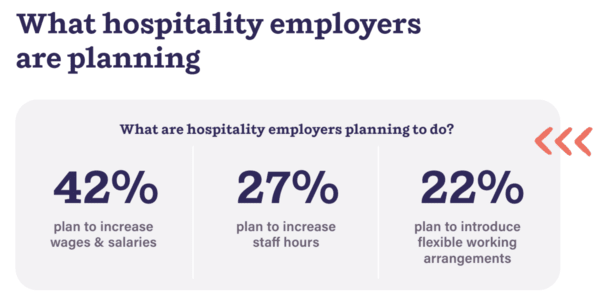Prior to the pandemic, the hospitality sector routinely employed immigrants to fill career openings. Hospitality businesses are having difficulties to fulfill labour requires considering that a lot of staff were pressured to return residence when the gates closed, and there is a substantial backlog in visa processing.
In reality, according to Australian Bureau of Statistics data, 51 for each cent of resort enterprises report issue recruiting suitable staff.
A new report from the leading shift do the job platform, Deputy, The Major Change: The Changing Landscape of Australian Hospitality, reveals insights into how the hospitality market is coping additional than two many years soon after the pandemic began, amid widespread labour shortages and source chain disruptions.

Shift employees functioning multiple careers and longer several hours
Numerous people have taken up jobs throughout numerous hospitality corporations as labour shortages plague the sector. In the Deputy platform, the proportion of change workers who labored various employment in the hospitality sector peaked in July 2022 at just under 3 per cent. In addition, change staff members are working increased several hours than they did on common before the pandemic or in the course of substantial vacation and browsing seasons (these types of as Christmas), when shift workers’ hrs generally peak.
According to Shashi Karunanethy, an impartial labour economist, this can be attributed to the casualisation of get the job done and elevated career possibilities in the gig economic climate. At the similar time, numerous workers may possibly be compelled to broaden their share of shift function in get to hold up with rising dwelling fees, with the share of shift employees performing numerous careers rising in lockstep with inflation costs.
Main states most difficult strike by labour shortages

In accordance to the facts, this is specifically obvious in large areas like Victoria and New South Wales, wherever companies are rostering 30 per cent significantly less shift perform several hours than prior to the outbreak. Karunanethy clarifies this to the existence of massive cities these types of as Sydney and Melbourne, which are hubs for education and company and for this reason appeal to much more worldwide students and abroad staff who get the job done in hospitality.
States that rely less on these people, these types of as Western Australia, have experienced the swiftest rebound. Having said that, these nations are not immune to labour shortages and continue to roster 10 for each cent fewer shift operate hrs than ahead of the outbreak.
Recovery across distinctive hospitality companies
Accommodations and sit-down restaurants experienced the best occupation gains and recoveries by means of 2022, with shift do the job hours raising by 50 for every cent and 30 for each cent, respectively, compared to pre-pandemic ranges. Presented that quite a few Australians have prevented abroad travel, Karunanethy says they are turning to staycations and dining ordeals to meet up with their experiential requirements. On the other hand, bars and quickly foodstuff stores continue on to struggle with labour shortages.
To present, bars continue on to make use of 20 for every cent much less change personnel than in advance of the pandemic. With growing rate pressures from meals and liquor suppliers and complications relocating to new earnings probable in takeaway and delivery products and services, the sector is experiencing a slew of difficulties.

When food stuff establishments are reserving 40% less hrs than prior to the pandemic, this is mainly owing to the industry’s adoption of food stuff shipping styles and labour-replacing systems, resulting in fewer full shift get the job done hrs.
Victorian rapidly food items outlets confirmed the finest lessen in shift function hours of any state. Customer shelling out behaviours in the drive-by way of and in-application delivery buys have now come to be maintained practices in the point out that have been subjected to the most remain-at-property regulations.
A considerable barrier for girls employees
The centrepiece reform to boost women’s labour industry participation is universal daycare, with one in four probable employees citing childcare as the main barrier to employment. As Baby Boomers and Technology X also acquire on childcare obligations, childcare plan will also impact older employees’ ability to enter labour.
In the entire sector, gals now make up 48 for every cent of change do the job several hours, up from 47 for each cent in 2020. Since gals now perform the bulk of change get the job done several hours, cafes and coffee outlets had the most significant expansion for woman change staff members (4 for every cent).
For a lot more info and additional results, access the whole report in this article.
Check out: Deputy.
Continue to keep up to day with our tales on LinkedIn, Twitter, Fb and Instagram.

